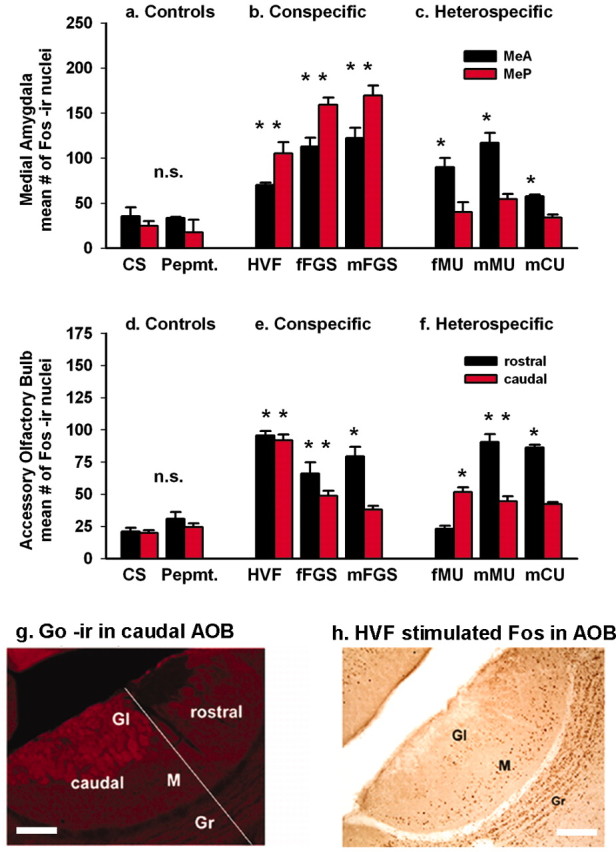Figure 1.

Categorical response to conspecific versus heterospecific chemosignals in the amygdala but not in the AOB. Compared with controls (a), conspecific (socially relevant) stimuli (b) elicited significant Fos activation in both the MeA and MeP (p < 0.01). Heterospecific (socially nonrelevant) stimuli (c) significantly activated the MeA (p < 0.01), but this category failed to activate the MeP (p = 0.272; probabilities were obtained from post hoc tests after two-way RM ANOVA on grouped data). Asterisks show differences (p < 0.01) between responses to individual stimuli and responses to unstimulated clean-swab (CS) controls (two-way RM ANOVA on individual data). n.s., Nonsignificant. d-f, Mitral cells of the rostral and caudal AOB show no categorical response difference between conspecific and heterospecific stimuli. The distribution of Fos expression to the rostral and caudal AOB was not consistent within the conspecific or the heterospecific groups of stimuli. g, Go-protein immunoreactivity delimits the caudal AOB glomerular layer. The diagonal line divides rostral from caudal AOB. h, Mitral and granule cells show the same pattern of response (to HVF here). M, Mitral layer; GI, glomerular layer; Gr, granule layer; Pepmt., peppermint. Scale bars: g, h, 50 μm.
